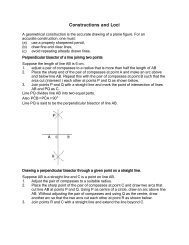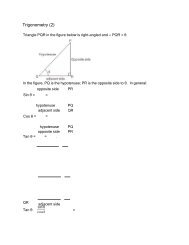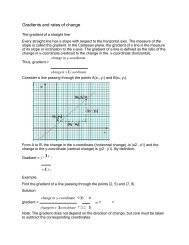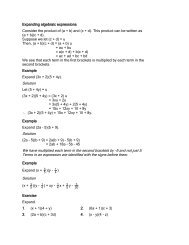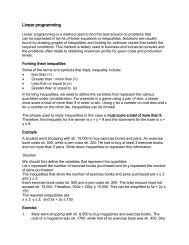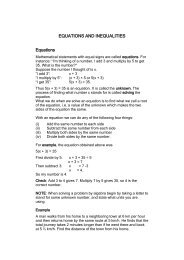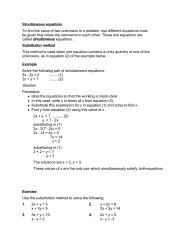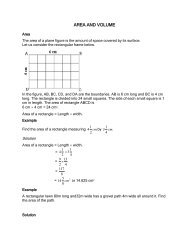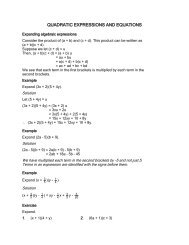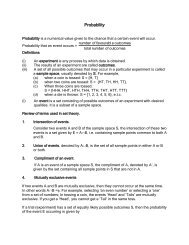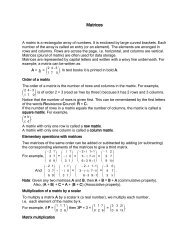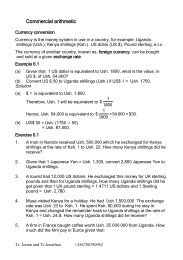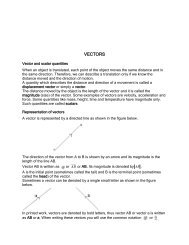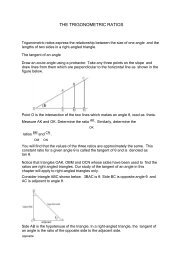J20
You also want an ePaper? Increase the reach of your titles
YUMPU automatically turns print PDFs into web optimized ePapers that Google loves.
Solution<br />
(a) The matrix that maps ∆P1Q1R1 onto ∆PQR is the inverse of N.<br />
N -1 = 1 3 2<br />
3 2<br />
1<br />
= <br />
2 1<br />
2 1<br />
(b)<br />
Example<br />
P1 Q1 R1 P Q R<br />
3 2<br />
3 2 0<br />
<br />
5 8 2<br />
= <br />
2 1<br />
2 1 1<br />
4 5 1<br />
Therefore, the coordinates of PQR are P(-5, 4), Q(8, -5), R(2, -1)<br />
2<br />
1 <br />
A(2, 1), B(5, 1) and C(5, 3) are vertices of ∆ABC and M = .<br />
3<br />
2<br />
(a) Find the image A1B1C1 of ABC under the transformation represented by<br />
matrix M.<br />
(b) Find M -1 .<br />
(c) Find the image of A1B1C1 under the transformation represented by matrix<br />
M -1 .<br />
(d) Comment on your results in (c).<br />
Solution<br />
A B C A1 B1 C1<br />
2<br />
1 2<br />
5 5 5<br />
11 13 <br />
(a) = Therefore, the coordinates of the<br />
3<br />
2<br />
1<br />
1 3<br />
8<br />
17 21<br />
vertices of the image are: A1(5, 8), B1(11, 17) and C1(13, 21).<br />
Area and the determinant of a matrix.<br />
Under some transformations, the size and shape of objects do not change,<br />
while under other transformations they change. When a matrix represents a<br />
transformation, the ratio of the area of the image to the area of the object is<br />
equal to the determinant of the matrix of transformation.<br />
Example<br />
A unit square with vertices O(0, 0), I(1, 0), K(1, 1) and J(0, 1) is given a<br />
3<br />
0 <br />
transformation represented by matrix N = .<br />
0<br />
2<br />
(a) Draw the square and its image.<br />
(b) Find the determinant of N.<br />
(c) Find the area of the image OI1K1J1.<br />
Solution<br />
O I K J O I1 K1 J1



